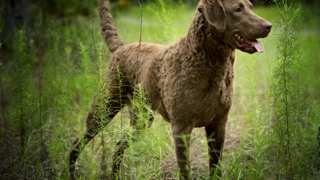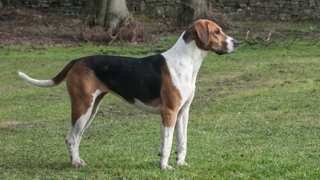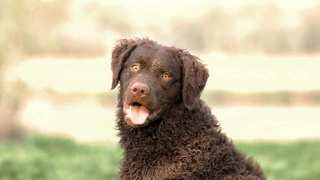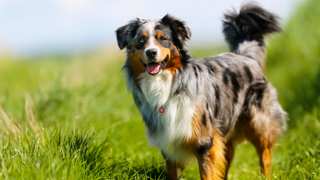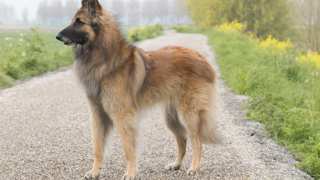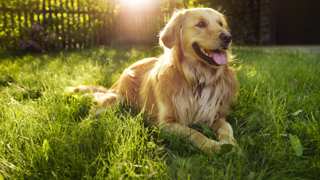As an active and athletic hunting dog, Flat-Coated Retriever exercise requirements are extensive. FCRs are members of the Sporting Group in the AKC and other clubs, and will enjoy a wide variety of activities--walking, swimming, fetch, canine sports competitions, among others--as well as a simple romp in the yard. They make excellent jogging and bicycling companions as well. It almost goes without saying, then, that these dogs are best for active families willing to provide their FCRs with ample exercise each day.
But specifically how much exercise? The typical adult Flat-Coated Retriever, depending on its age and overall activity level, will need at least 90 minutes of proper exercise per day, which you can accomplish with a couple of walks, jogs, or bike rides and a good period of play. You can start exercising your FCR puppy at three months old by taking it on short (10-minute) leashed walks, then you can increase the walks' length and frequency as the puppy grows.
Some precautions to observe when exercising your Flat-Coated Retriever: first, puppies younger than nine months old shouldn't participate in activities that include a lot of jumping, running, or navigating of stairs, as doing so can injure their still-developing joints and bones. And regardless of age, the use of a leash is recommended when you and your FCR are in public. As natural hunters, these dogs have high prey drives, and will instinctively chase interesting-looking critters--birds, squirrels, cats, even small dogs--if given the chance; they're also extremely friendly, curious, and social, and will run off in search of new playmates if they're allowed. A leash will help you control your FCR in these situations. Even when exercising in your own yard, the area will need to be securely fenced, as FCRs are known to wander. And finally: these dogs form extremely close bonds with their human family members and will suffer separation anxiety if left alone, so they'll respond much better to exercises you perform along with them.
Safeguards aside, giving your Flat-Coated Retriever lots of exercise every day is a must. These dogs are enthusiastic, fun-loving, and athletic--they're often called the Peter Pans of dog breeds!--and regular physical activity is a requirement for them. If bored or restless, FCRs will become destructive, frustrated, and completely unhappy in general. Consistent exercise will help your FCR stay the cheerful, spirited dog it's meant to be. Some exercise ideas:
- Walking/Jogging/Bicycling: Two 45-minute walks (or 30-minute jogs or bike rides) per day is a good target
- Fetch: As retrievers, FCRs will chase a ball or stick for hours
- Tug-of-War: Great indoor, rainy-day activity; use a rope or old towel
- Swimming: These dogs love the water
- Dog Park: If properly socialized, FCRs enjoy the company of other dogs
- Canine Sports: An FCR can excel at obedience and agility trials, flyball, and other competitions
- Hiking: Excellent bonding activity; the dog can even carry the backpack
When indoors, it's a good idea to give your FCR access to one or more balls or toys that will allow the dog to burn excess energy. It's also recommended that you establish a regular exercise schedule for the dog, such as walks, jogs, or bike rides after breakfast and dinner and a play period in the afternoon.


